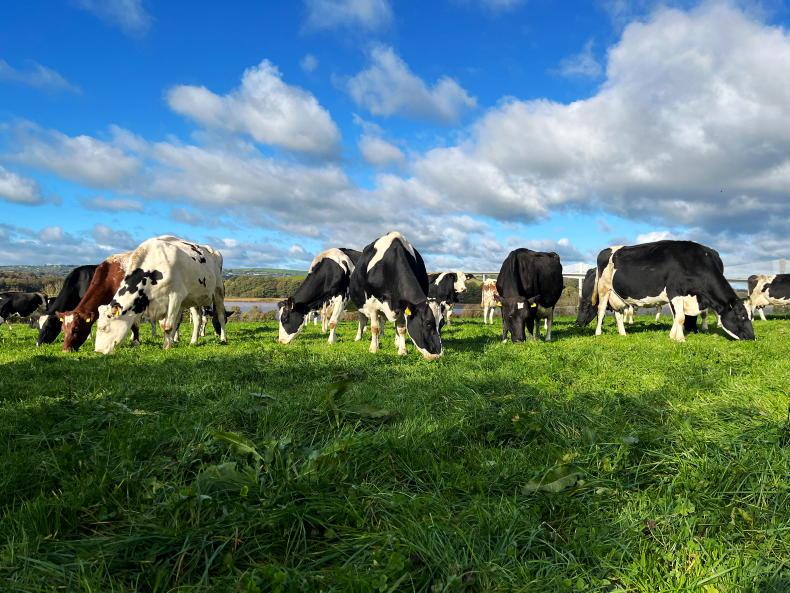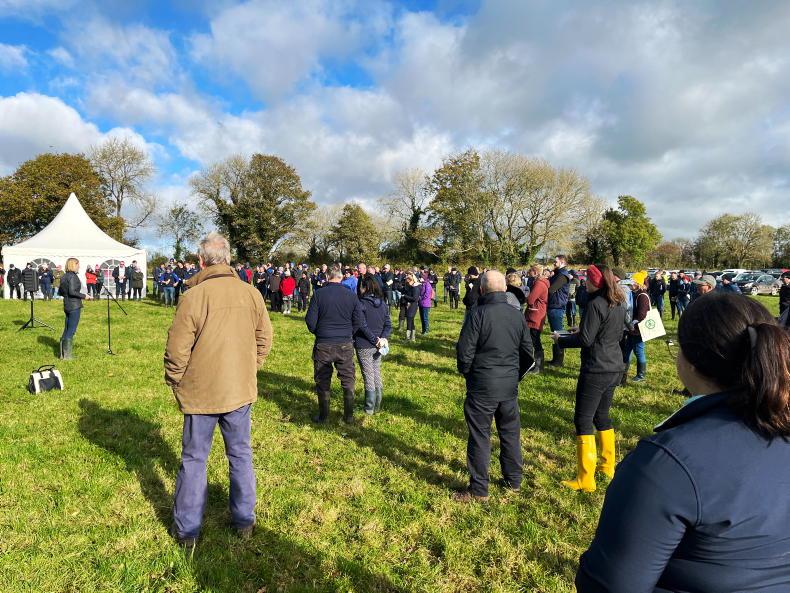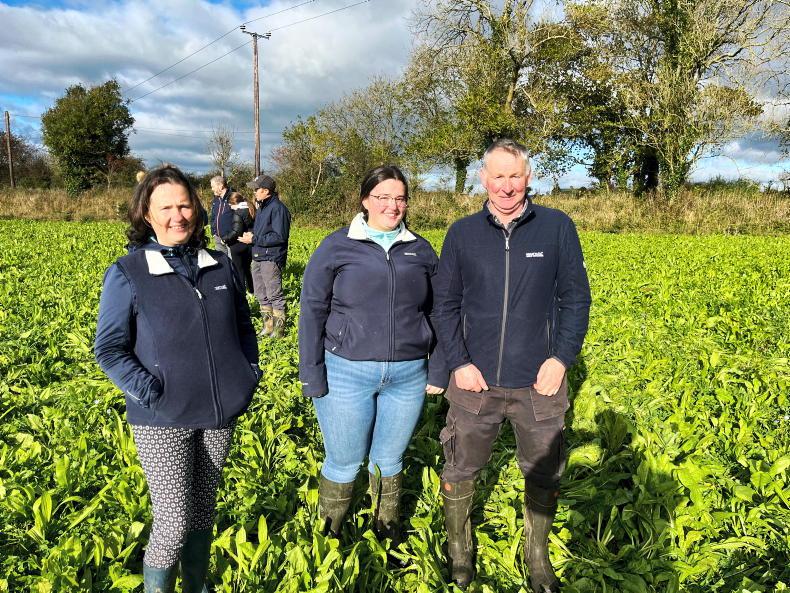Organic dairy farmers Joe and Alicia Whitty say they are “never going back” to conventional farming following the changeover to organic farming in 2007 and organic dairy in 2015.
The couple and their family were joined on their farm at Dunganstown, New Ross, Co Wexford, by over 250 farmers on Wednesday.
The Whitty farm consists of 150ac between owned and leased land. The herd of 67 cows is milked all year, with calving commencing in October and the milk is supplied to Glenisk.
Change to organic
Attendees learned of the Whittys' change from conventional farming to organics in 2007 and organic dairy in 2015.
Joe Whitty said: “We were renting a lot of land and growing cereals, but it just wasn’t adding up. We were at nothing, so we changed to organics. When the quotas went, we decided we’d go dairying for better income.”
Alicia Whitty said: “I was working off farm at the time and decided I had enough of it. We had a farm and surely we could do something to make a living for the two of us and the family.
“So, we decided to jump off the cliff. It was a scary jump and it’s a decision we haven’t regretted. We often spoke about going back and no is the answer, no way would we go back from organics.
“It’s a wonderful way to live. We’re not putting trash on to our land. What you do to the land, you do to yourself and we’re not one bit sorry.”

They began milking 48 cows in 2015. The herd was established through the purchase of 25 organic maiden heifers in Donegal, a derogation which brought in another 15 conventional maiden heifers and some smaller lots which were purchased from organic farms around the country.
Joe continued: “Probably one of the biggest problems is finding stock. There’s no way around it at the minute.”
System that works
The 67 cows are milked year-round, with 60ac on farm for grazing and another 50ac used for silage. There is also 10ac of a designated habitat and 5ac of forestry on the farm.
He described the variety of crops grown on the farm including permanent pasture, white clover swards, red clover swards, multi-species swards, combi crops and spring oats.
Red clover was demonstrated as a key component of the system and one which supports soil fertility.
A mixed-species sward sown in 2020 was also shown to farmers. The field on display was available for grazing every three weeks during the summer and had one cut of silage this year.
Breeding for organic
The 48 cows which made up the original herd were mainly Friesian-crosses.
As the original herd consisted of maiden heifers, the requirement for replacements over the first four years was limited. Because of this and to add beef value to calves, all cows were bred to Belgian Blue and Hereford stock bulls. Calves born were sold elsewhere.
In recent years, more AI has been used on the farm with Shorthorn sires used to breed a hardier-type dairy animal and heifers are raised on farm as replacements.
Weanling heifers were seen on the farm and the Whittys reported that even despite not being able to dose them, they are doing well.
Interest
The 250 farmers present at the farm walk, organised by Teagasc, showed great interest in the opportunities to be found in organic dairy farming.

Minister of State at the Department of Agriculture Pippa Hackett, Teagasc staff, the Whittys and representatives from the Irish Organics Association and the Organic Trust fielded questions on a range of topics including grass management, antibiotic alternatives, housing and compliance.
Minister Hackett confirmed that the Organic Farming Scheme will reopen in January 2022 and told farmers in attendance that “every cent” of the €256m allocated to organics under CAP Pillar II “will be spent”.
Minister Pippa Hackett @pippa_hackett says “every cent will be spent” of €256m funding allocated to organics under CAP Pillar 2 and invites farmers to look at organics as a viable option @agriculture_ie @teagasc pic.twitter.com/ojQfrC9aY8
— Irish Farmers Journal (@farmersjournal) November 3, 2021
Teagasc organic specialist Joe Kelleher said he will be commencing an “introduction to organic dairy” group in the coming weeks.
Interested farmers are encouraged to email Joe.Kelleher@teagasc.ie for further information.






 This is a subscriber-only article
This is a subscriber-only article










SHARING OPTIONS: